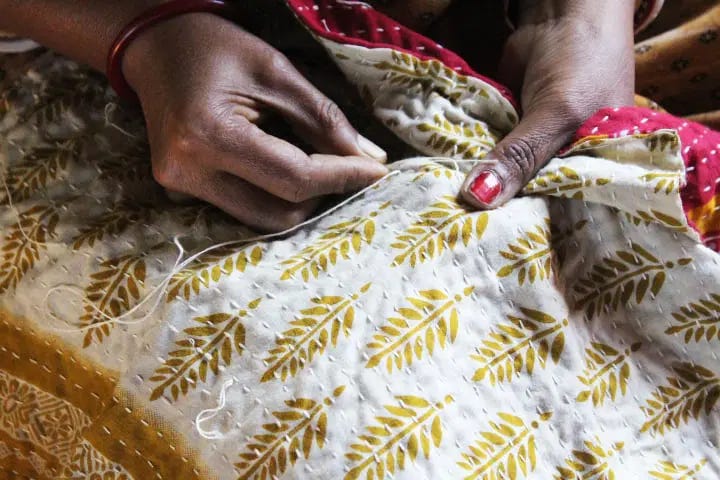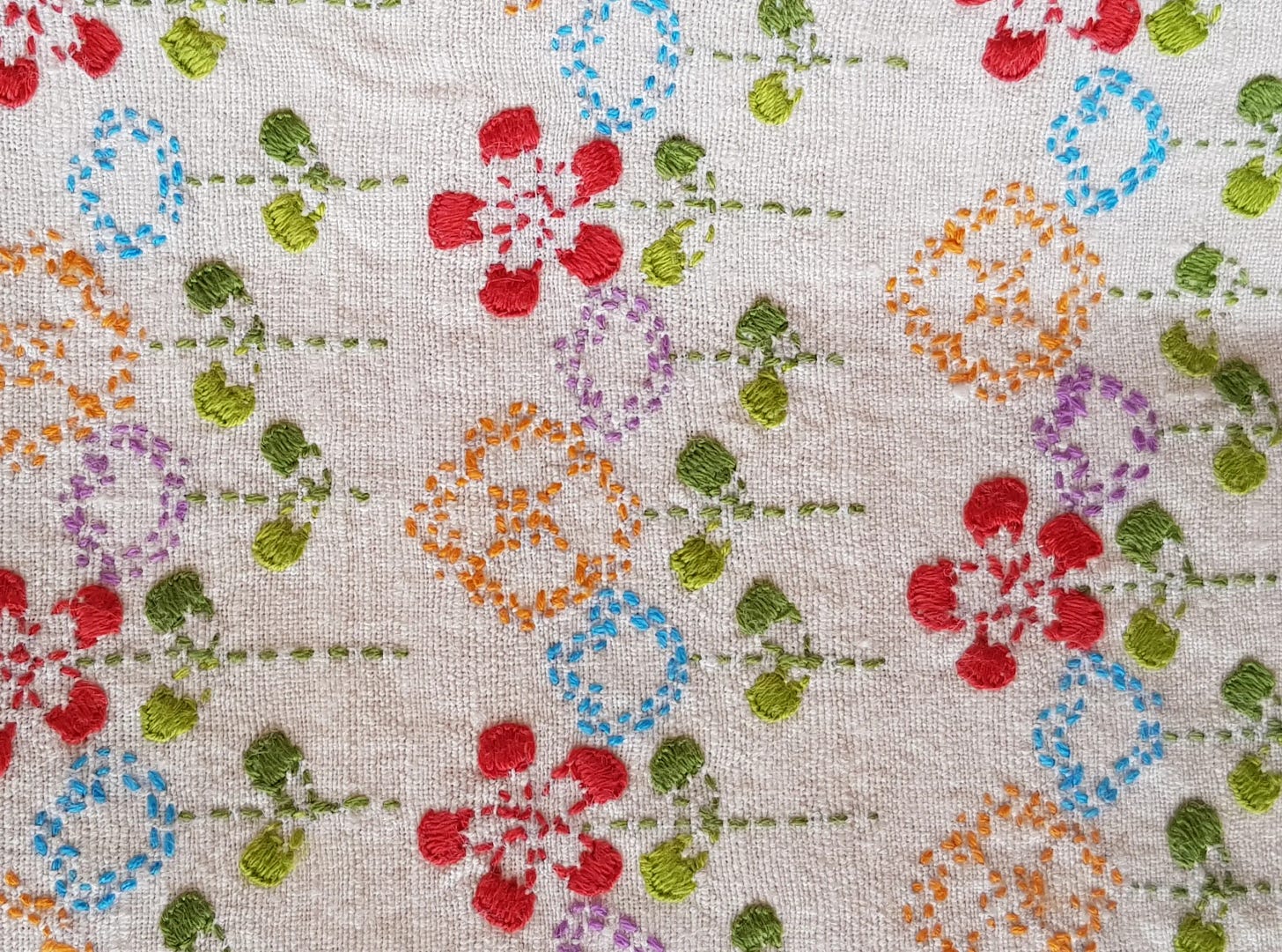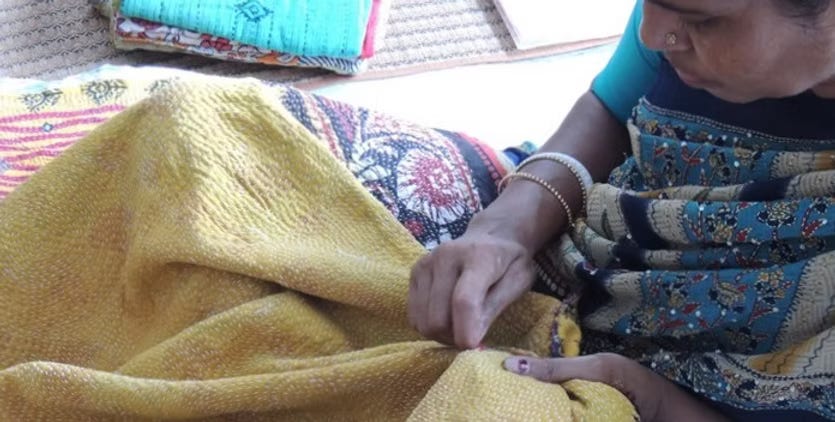Kantha - the OG of fashion upcycling from India
Long before we heard of words like ‘circularity’ and ‘zero-waste’, a homegrown craft of transforming old, worn-out textiles into quilts and keepsakes was a part of regular life in India.
In a country overflowing with artisanal brilliance, it's always tough to pick favourites. However, when I had to choose one hand embroidery technique for my slow-fashion label back in 2016, I chose Kantha.
Kantha uses one of the simplest embroidery stitches - the running stitch - in the most intricate ways. It used to be traditionally practised by women in Bengali households, where old saris and fabrics are stacked, layered, and brought back to life in the form of quilts, with rows and rows of tiny hand stitches. No machines, no electricity - just a needle, thread, time, care and sensible understanding of creative repurposing of old but useful textiles.
What we call ‘upcycling’ and ‘sustainable living’ today was just an ingrained part of our cultural fabric just a few decades ago.
Kantha, today:
While it began as a way to repurpose discarded saris to make utility items, in modern times, Kantha is appreciated for its artistic expression, not limited to reusing old clothes.
It is recognized as a hand embroidery craft of creating intricate motifs with the humble running stitch. You can find the embroidery style across garments, accessories, and home furnishings, and it is loved by many designers and artists.
Why I chose Kantha:
For me, Kantha ticked every box when it comes to making conscious fashion:
It's one of the oldest examples of repurposing with purpose, and it was my way of rooting to keep a beautiful, age-old craft alive.
It uses no electricity - just time, patience and skillful hands.
Most importantly, it provided dignified, creative livelihoods to women artisans. I had the privilege of working with a certified fair trade organization that has been supporting over a hundred craft-based livelihoods for more than 40 years. Together, we worked on original artworks from delicate florals to geometric patterns embroidered into environment-friendly textiles like eri silk and hemp. (More about these textiles in a later piece.).
A thread of emotional pride and heritage:
What makes handcrafted pieces truly special is the human touch. There’s a certain emotion stitched into every motif, every piece, as it is made with a lot of care and love by an actual person, using skills that are mostly still passed on through generations. Kantha is just one among the many craft traditions across India that have stood for sustainability long before it became a buzzword.
The plethora of unique craftsmanship from every corner of the country is a legacy that deserves to be celebrated and carried forward.
Special note: If you know of any such unique crafts from your region, whose story deserves to be told, please feel free to contact me.
Also, once in a while, I urge you to buy a handcrafted piece from an artisan whenever you get the chance. If you are visiting West Bengal, keep an eye on Kantha embroidered products.
I am Namrata Gohain, a designer-turned-storyteller, writer and content producer. I document stories on responsible travel, crafts, cuisine, slow living and my creative journey.










Wow, never heard of Kantha before! Just Googled and researched more on it, and it says a lot! I've always known about the kind of regular household upcycling that happens in Indian households, like repurposing old sarees into new dupattas or transforming embroidered sheets into tablecloths, worn clothes into new functional ones!